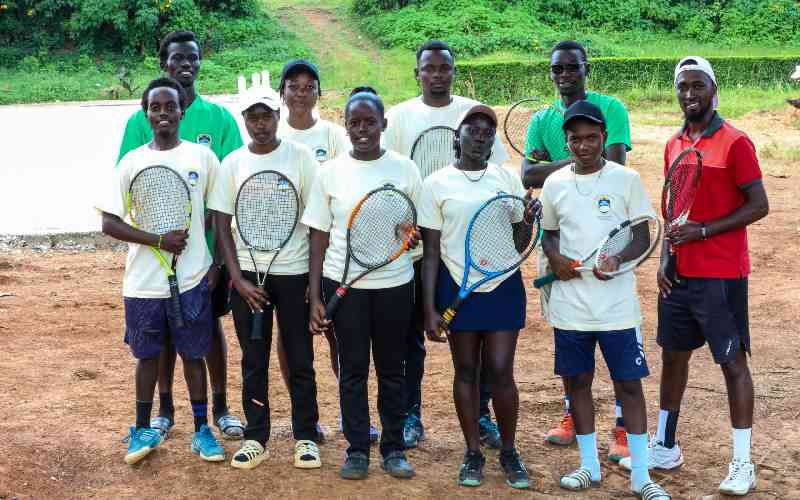Grade Nine learners could, from next year, move to secondary schools as the government seeks options to address challenges facing Junior Secondary Schools (JSS).
Shortage of facilities; classrooms, libraries and labs, lack of teachers and poor training have been major setbacks since the first learners under the Competency-Based Curriculum moved to JSS.
The Standard has established that secondary schools with furnished laboratories, libraries and vacant classrooms that will arise after this year's KCSE candidate leave could help the government salvage JSS.
Sources in government told The Standard that the expected rigour in Grade Nine and the strengthening of career paths among students call for a radical shift in the implementation of the new level of learning.
If adopted, the decision will cement proposals by the Kenya Union of Post Primary Education Teachers (Kuppet) that only Grades Seven and Eight be domiciled in primary school while Grade Nine be moved to high school.
Kuppet argued that the one-year implementation of the Junior Secondary School has been "terribly corrupted" and plagued by numerous problems, and should be discontinued.
"We have a lot of underutilised resources in secondary schools while primary schools are struggling. These include trained teachers and infrastructure," said Kuppet secretary general Akello Misori in an interview with The Standard.
The union also cited an acute shortage of qualified teachers in junior secondary schools as one of the challenges affecting JSS.
According to Kuppet, many teachers assigned to Junior School are either teaching for the first time thus taking time to adjust, or lack subject mastery in the areas they are tasked to handle due to shortage of teachers.
The union said this has created a chaotic learning environment.
Kuppet officials also alleged discontent among JSS teachers due to poor pay, and recommended a comprehensive assessment of JSS.
A spot-check by The Standard exposed glaring the struggles of learners, teachers and inefficiencies of the new level of education with fears that the situation might deteriorate if not arrested in time.
The spot-check involved a one-hour-long immersion into the world of a State-sponsored Junior Secondary School at the Donholm Comprehensive School.
The visit offered a stark window into the bumpy reality behind this ambitious educational reform.
While the enthusiasm of both teachers and students was palpable, congestion, limited resources/facilities, and inadequate teachers painted a different picture.
This creates a stark contrast between the ideal situation in a JSS class versus the reality.
Johnson Nzioka, the headteacher of Donholm Comprehensive School revealed that the institution has some 750 learners in JSS.
Out of this, 415 are Grade 8 learners- the pioneer class of the CBC- distributed in five streams and another 335 learners in Grade 7 are split into seven streams.
Overcrowding and congestion are evident when we get to our first class visit to one of the five Grade 8 streams. It is labeled 8s.
The classroom was filled to the brim and there was barely any visible space left to walk to the back of the class.
The only visible aisle between the lockers was the length of the palm.
The learners barely had any space to leave their seats let alone allow a teacher to walk around the classroom, thus stuck at the front of the classroom.
The development is a stark contrast to a private institution, Damacrest School in Thogoto.
The learners in Junior Secondary School here are about 250; with Grade 8 accounting for 130 and the remaining 120 are 7th graders.
The classrooms accommodate not more than 30 learners making the classes well-spaced with an aisle of about a foot apart.
The teacher seemingly can freely walk through the classroom.
The school also enjoys an elaborate science laboratory fully equipped and a full-time laboratory technician.
The computer laboratory has more than 20 computers and the school head indicates that all are working.
But at Donholm Primary, the cracks run deeper than congestion, there also is the inadequacy of teachers to handle Junior School.
Mr Nzioka, the headteacher reveals that the total number of teachers posted at the junior school level is not enough to handle the 13 streams of JSS spread across Grades 7 and 8.
Nzioka reveals that the school has 18 teachers for JSS including 12 sent to the institution by
"You realize that the number of learners against the number of streams, those teachers are not able to man those classes, so we have been able to internally upgrade some teachers in the Primary section especially those who have been teaching former Standard 8 and former Standard 7," Nzioka said.
Mr. Nzioka also indicates that the school is engaging the service of four BoM-employed teachers to handle the subjects that the existing teachers lack ample expertise in handling.
One of the teachers who caught up with the Standard Ms. Khadija Atieno, revealed that she juggles four subjects: pre-technical studies, Computer Studies, Business Studies, and Christian Religious Education.
In a week, she handles 32 lessons leaving her with eight free lessons which, she says, she uses to prepare for her upcoming lessons.
Although she admits that the workload is somewhat heavy, she displays optimism that with proper planning it is doable.
On the sidelines, Ms. Khadija reveals that this is her first job posting after campus and she is part of the intern teachers TSC has contracted to teach Junior School.
"So far the experience is nice. Our main work as teachers is mainly to facilitate learning a lot of tasks are handled by the learners," she noted.
But she reveals that she has had an uphill task in teaching some areas such as pre-technical studies which now combines three former subjects: Computer studies, Business Studies and Pre-technical studies.
'The challenge here is under computer, for example, in our second strand we are supposed to teach the learners about computer hardware but when you come to our school we don't have the facilities, we only have the tablets," she said.
For Science subjects, the anticipated laboratories are yet to be achieved.
To alleviate the crisis, the government has provided utility lockers with science laboratory equipment, to supplement the lack of laboratories.
This way, Mr. Nzioka argues, the learners can experience the practical lessons.
The equipment is distributed under the School Equipment Production Unit.
But this story is not unique to Donholm Comprehensive School but represents the face of State-funded institutions, with those in rural areas bearing even the toughest blunt.
Reports from across Kenya paint a similar picture: overcrowded classrooms, understaffed schools, and a lack of learning materials for practical subjects.
While the CBC emphasizes critical thinking and problem-solving, the reality in many public schools like Donholm is improvisation and struggle.
On January 15, the Ministry of Education stated that the government had allocated Sh3.9 billion for the construction of an additional 15,021 classrooms for Junior Secondary School (JSS) by 2025 to accommodate the first-grade 9 learners.
Education Cabinet Secretary Ezekiel Machogu said the World Bank will provide an additional Sh9 billion towards the building of 9,000 classrooms.
He said the National Government Constituency Development Fund (NGCDF) will also give support to guarantee that the classrooms are ready for use by 2025.
"We are taking steps to ensure that our schools have the facilities they need so that staff members and students can work together in a supportive environment," he said.
 The Standard Group Plc is a multi-media organization with investments in media
platforms spanning newspaper print operations, television, radio broadcasting,
digital and online services. The Standard Group is recognized as a leading
multi-media house in Kenya with a key influence in matters of national and
international interest.
The Standard Group Plc is a multi-media organization with investments in media
platforms spanning newspaper print operations, television, radio broadcasting,
digital and online services. The Standard Group is recognized as a leading
multi-media house in Kenya with a key influence in matters of national and
international interest.
 The Standard Group Plc is a multi-media organization with investments in media
platforms spanning newspaper print operations, television, radio broadcasting,
digital and online services. The Standard Group is recognized as a leading
multi-media house in Kenya with a key influence in matters of national and
international interest.
The Standard Group Plc is a multi-media organization with investments in media
platforms spanning newspaper print operations, television, radio broadcasting,
digital and online services. The Standard Group is recognized as a leading
multi-media house in Kenya with a key influence in matters of national and
international interest.







